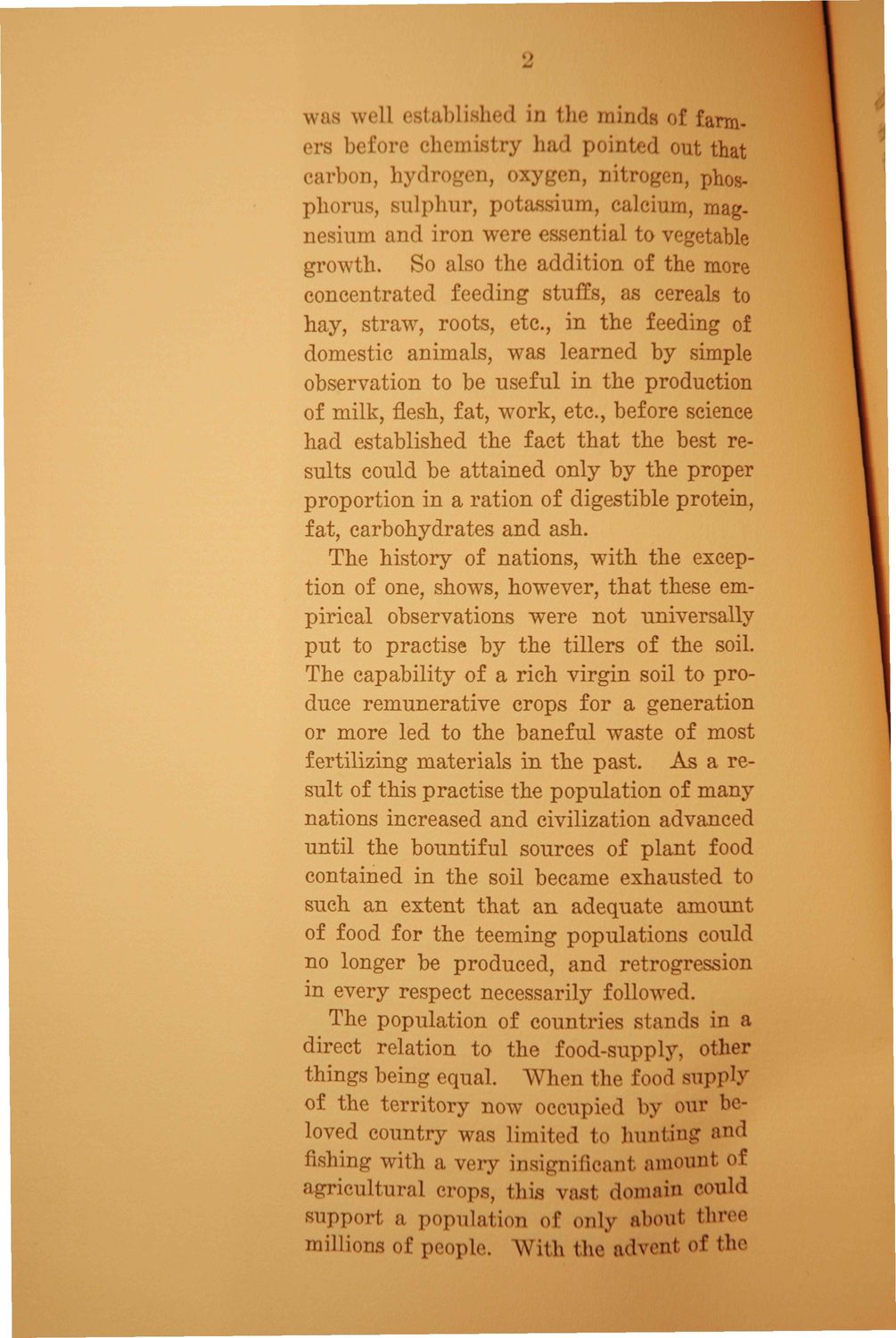| |
| |
Caption: Booklet - Addresses from Inauguration of Noyes
This is a reduced-resolution page image for fast online browsing.

EXTRACTED TEXT FROM PAGE:
i) was well established in the minds of Earmrs before chemistry had pointed out that carbon, hydrogen, oxygen, nitrogen, phosphorus, sulphur, potassium, calcium, magnesium and iron were essential to vegetable growth. So also the addition of the more concentrated feeding stuffs, as cereals to hay, straw, roots, etc., in the feeding of domestic animals, was learned by simple observation to be useful in the production of milk, flesh, fat, work, etc., before science had established the fact that the best results could be attained only by the proper proportion in a ration of digestible protein, fat, carbohydrates and ash. The history of nations, with the exception of one, shows, however, that these empirical observations were not universally put to practise by the tillers of the soil. The capability of a rich virgin soil to produce remunerative crops for a generation or more led to the baneful waste of most fertilizing materials in the past. As a result of this practise the population of many nations increased and civilization advanced until the bountiful sources of plant food contained in the soil became exhausted to such an extent that an adequate amount of food for the teeming populations could no longer be produced, and retrogression in every respect necessarily followed. The population of countries stands in a direct relation to the food-supply, other things being equal. When the food supply of the territory now occupied by our boloved country was limited to hunting and fishing with a very insignificant amount of agricultural crops, this vast domain could s u p p o r t a population of only about three millions of people. "With the advent of the
| |